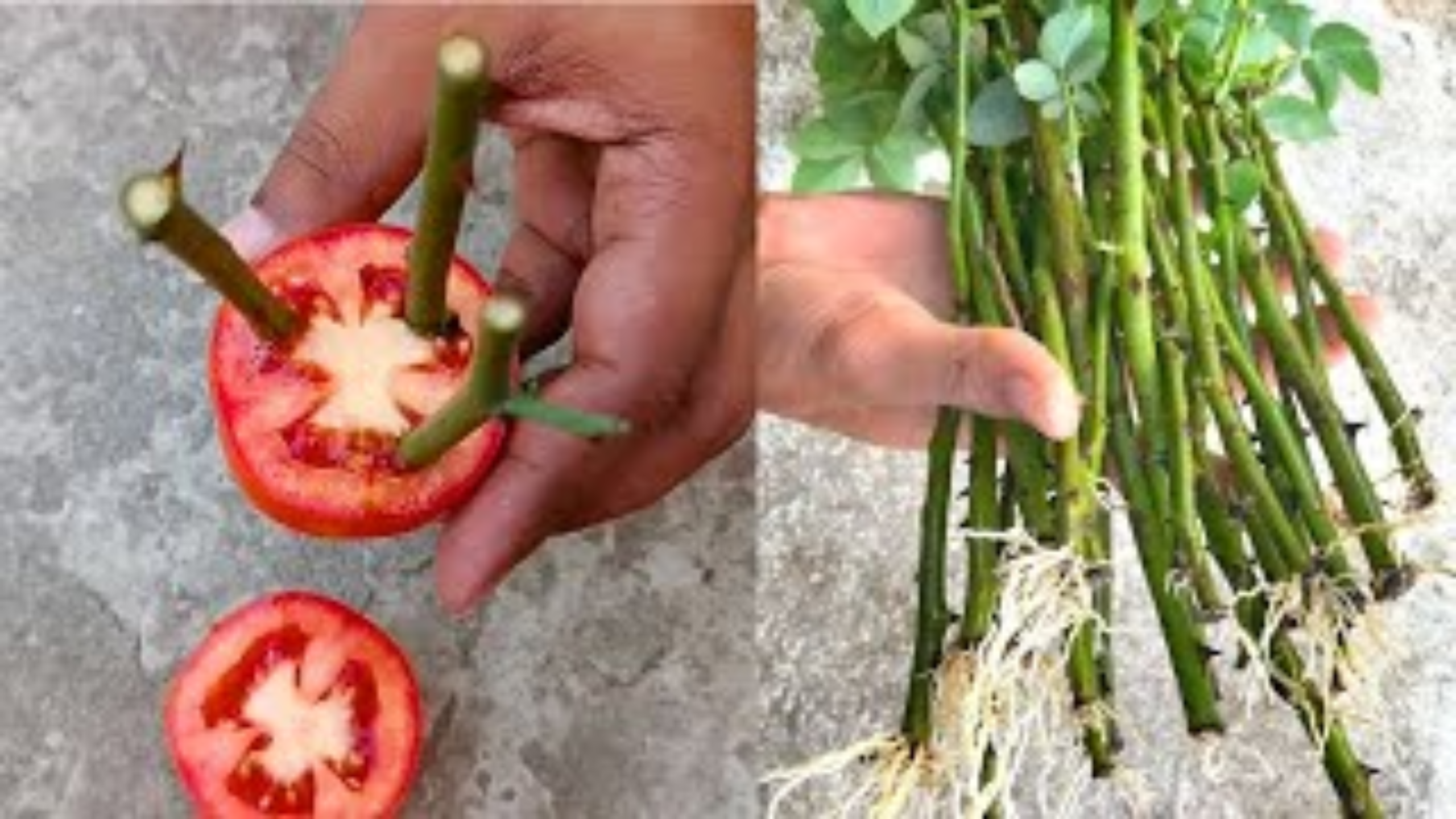Have you ever wondered if you can propagate a rose by using a simple, everyday vegetable like a tomato? It might sound unusual, but this innovative gardening technique leverages natural properties of tomatoes to help rose cuttings develop roots more effectively. Whether you’re an experienced gardener looking for new tips or a beginner eager to try something fun and rewarding, this method can be a great addition to your plant-growing toolkit.
Let’s walk through the process step-by-step, explore why it works, and give you all the tips you need to succeed.
Materials Needed
Before diving into the planting process, gather these essentials:
- A healthy rose cutting (preferably from a mature, disease-free plant)
- A fresh, firm tomato
- Sharp scissors or pruning shears
- Rooting hormone (optional but recommended for better results)
- A pot with drainage holes
- Potting mix suitable for roses or general planting
- A clear plastic bag or cut plastic bottle
- Clean water
Having everything ready beforehand makes the procedure smoother and increases your chances of success.
Step 1: Preparing Your Rose Cutting
Start with selecting a healthy stem from your rose bush.
Tip: Choose a stem that’s about 4-6 inches long, preferably one that has recently bloomed and is still flexible.
Carefully cut just below a node (the small bump on the stem where leaves grow). This is the ideal point for rooting since it contains cells capable of developing into roots.
(Optional): Dip the cut end into rooting hormone powder. This step can speed up root development but is not mandatory.
Step 2: Preparing the Tomato
Select a ripe, firm tomato.
Why a tomato? Tomatoes contain natural hormones and nutrients that stimulate root growth. Plus, their soft interior helps create a humid environment around the cutting.
Make a hole in the center of the tomato large enough to insert the rose stem without crushing it. Use your finger or a small stick to gently carve out this hole.
Step 3: Inserting the Rose Cutting into the Tomato

Carefully insert the cut end of your rose stem into the hole you made in the tomato. Ensure it’s well seated and stands upright. The idea is to keep the cutting moist and provide a nurturing environment for root initiation.
Step 4: Planting the Tomato and Rose Cutting
Fill a pot with well-draining potting mix suitable for roses or general gardening.
Make a hole in the soil enough to accommodate the tomato with the inserted cutting. Carefully place the tomato with the rose cutting into the soil, leaving the top part of the tomato exposed. This setup allows the tomato to act as a natural “envelope,” maintaining humidity around the cutting.
Step 5: Creating a Humid Environment
Cover the pot with a clear plastic bag or a cut plastic bottle to trap moisture and create a mini-greenhouse effect.
Tip: Make small air holes in the plastic for ventilation. Keep an eye on the humidity level — the environment should be moist but not soggy, preventing mold or rot.
Step 6: Providing Proper Care
Place the pot in a warm spot with bright, indirect light. Ideal temperatures are between 21-24°C (70-75°F).
Water the soil lightly, keeping it consistently moist but not soaked. Overwatering can lead to rot, so moderation is key.
Step 7: Monitoring Root Development
Patience is essential. Usually, within 4 to 6 weeks, you’ll notice root growth.
How to check? Gently tug the cutting. Resistance indicates roots are forming. When you see healthy roots and new leaf growth, it’s time to transplant.
Step 8: Transplanting and Long-term Care
Once your rose cutting has established roots, remove the plastic cover gradually to acclimate the plant to its new environment.
Plant it in a sunny location where it receives at least six hours of direct sunlight daily.
Water deeply but infrequently, allowing the topsoil to dry slightly between waterings. Regular fertilization and pruning encourage healthy growth and blooming.
Why Does This Method Work?
Tomatoes contain natural growth hormones, such as auxins, which promote root formation. Additionally, their high water content helps maintain humidity around the cutting. This combination creates an optimal environment for rose cuttings to develop roots without the need for synthetic rooting agents.
Common Questions
Is this method suitable for all types of roses?
Yes, most rose varieties can be propagated using this technique, especially hybrid teas and climbers. However, success rates may vary based on the specific plant and environmental conditions.
Can I use this method with other vegetables or fruits?
While tomatoes are particularly effective due to their hormonal content, some gardeners have experimented with other fruits like apples or even potatoes. But tomatoes tend to yield the most consistent results.
How long does it take for the rose to bloom after rooting?
Typically, it can take about a year or more for a new rose plant to bloom, depending on the variety and growing conditions.


pa Da yuksek hacklink buyhacklink.com 24 saat backlink buyhacklink.com https://www.jadekusadasi.com/
Related Site write my thesis